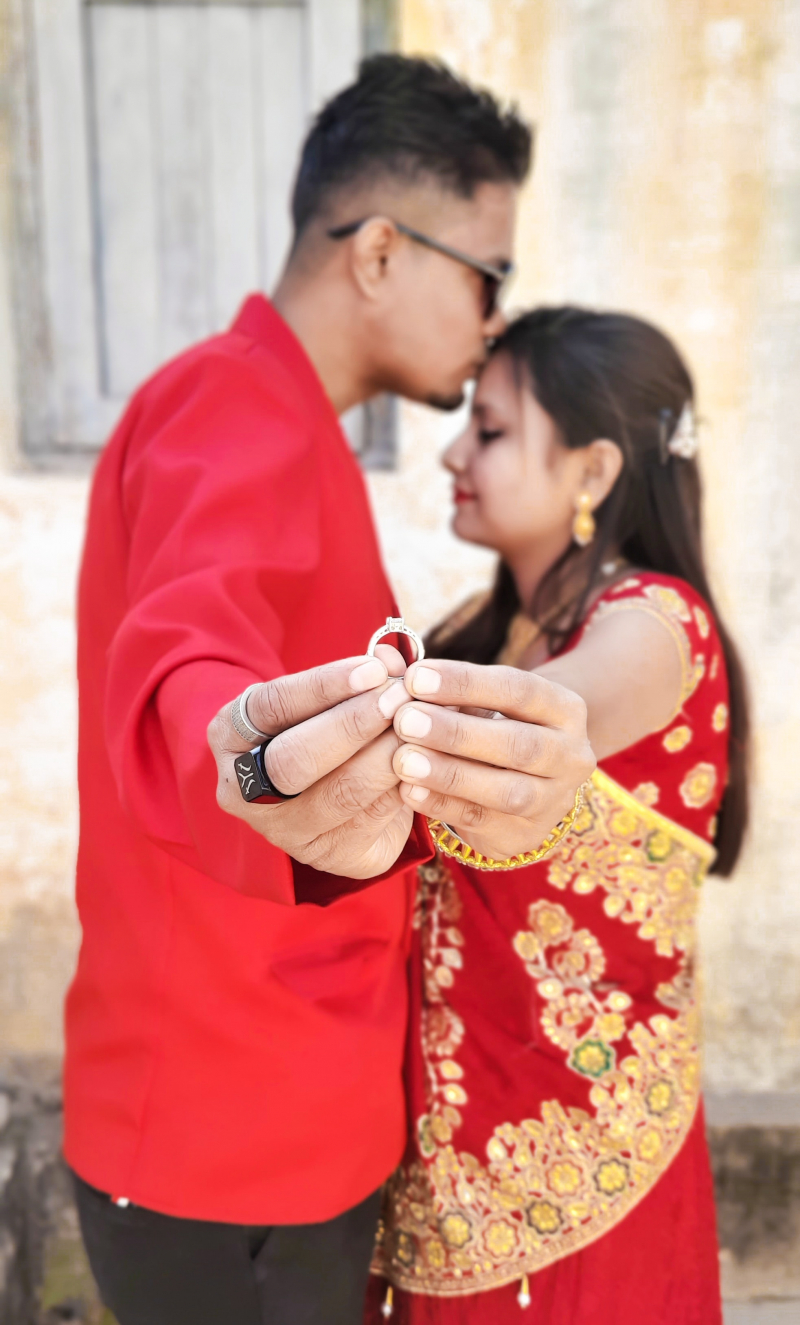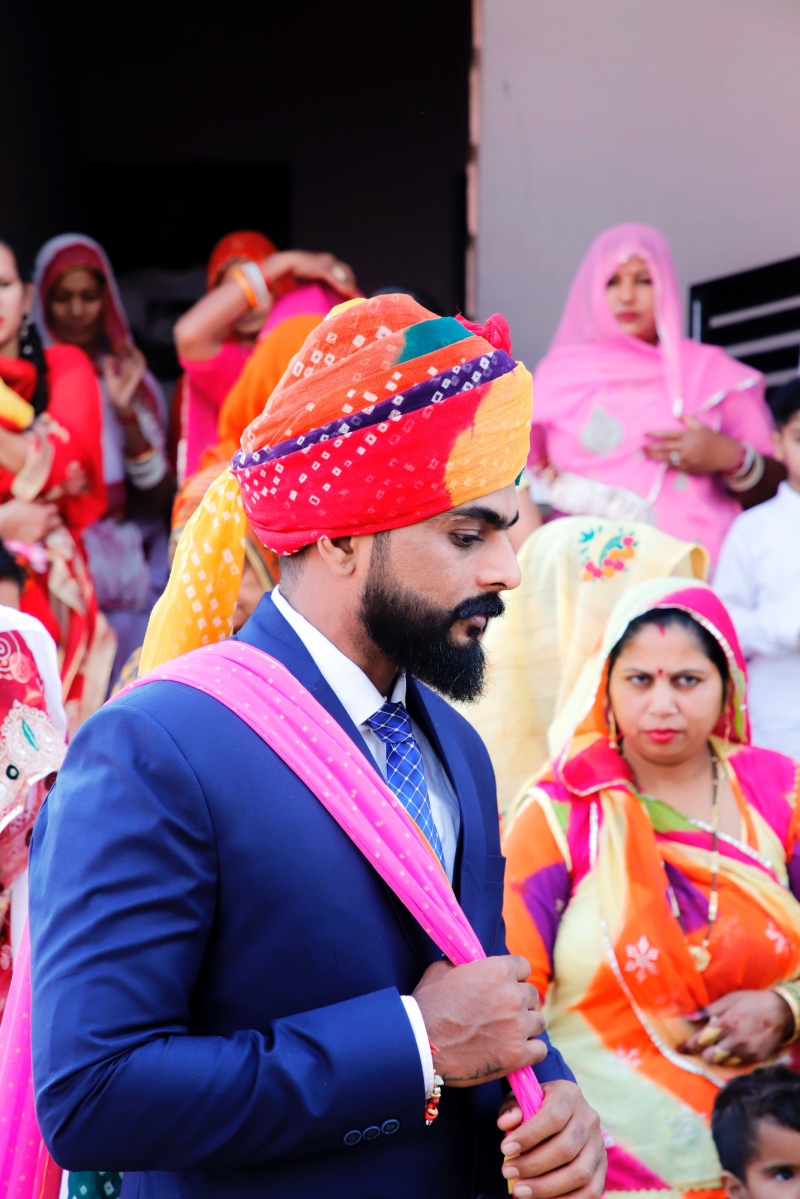In the Pheras rite, the bride and groom exchange wedding vows and go around the fire seven times.
The Pheras, the most important part of Jain wedding customs, take place at a carefully chosen time, believed to be the luckiest for the couple. In these rounds, a meaningful symbol emerges: during the first Phera, the bride walks ahead of the groom, representing her role as the initiator of their life together. Then, for the next three rounds, the groom leads, signifying his commitment to guide and protect their journey as a couple.
During these important rounds, the priest, a respected figure in the ceremony, recites the Mahaveerashtak Strot, asking for blessings from the spiritual world to bless and sanctify the union. The melodious words of the Mahaveerashtak Strot fill the air, adding a sense of holiness and respect to the ritual. Simultaneously, the gathered guests, friends, and family members become active participants. Their voices raised in harmonious unison, singing the Mangal Geets, celebratory songs that fill the atmosphere with a sense of joy and jubilation.
As the Pheras culminate, the couple proceeds to take the seven vows of marriage, known as the "Saat Vachan." These vows capture the core of a lifelong partnership, promising strong commitment, love, and support through life's ups and downs. They commit to following important Jain values like truth, non-violence, and spiritual growth.












